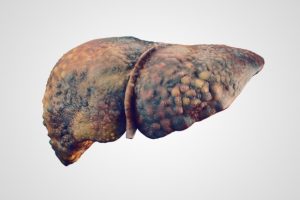 Primary biliary cholangitis (previously known as primary biliary cirrhosis or PBC) is a type of autoimmune liver disease. The autoimmune condition causes damage to the liver bile ducts, leading to symptoms such as fatigue, poor memory, liver fibrosis, and even liver failure. Scientists have developed a new test to better detect patients who are at risk for PBC.
Primary biliary cholangitis (previously known as primary biliary cirrhosis or PBC) is a type of autoimmune liver disease. The autoimmune condition causes damage to the liver bile ducts, leading to symptoms such as fatigue, poor memory, liver fibrosis, and even liver failure. Scientists have developed a new test to better detect patients who are at risk for PBC.
Currently, only 70 percent of patients will respond to PBC treatment, while 30 percent do not, which is often determined only after a year of treatment.
Advertisement
With the new test, the researchers have identified a gene signature related to the immune response in the liver tissue of high-risk patients.
The researchers used the NanoString nCounter digital expression platform to quickly screen liver biopsies for this gene signature.
Lead author Dr. Lucy Walker explained, “This NanoString test would be easy to introduce into a clinical setting as it needs no separate samples. Our initial results show the technique provides a reliable indicator of a patient’s likelihood of failing to respond to the standard treatment. This means, medical teams could intervene earlier with alternative treatments, increasing the chances of success and, perhaps, staving off the need for a liver transplant.”
Dr. Walker explained how the development of the NanoString test came about, “As we have identified a separate gene expression for those with high-risk PBC, it raises the possibility that PBC may actually be two separate conditions with very similar symptoms. This is something we will be examining further in future, larger studies.”
So far, the researchers only tested a small group of 13 individuals, so larger test groups are required.
Coauthor Dave Jones added, “Currently, patients with high-risk PBC may be offered immunotherapies, however, these have mixed results and it may be that often the aggressive nature of the condition in high-risk patients means that even as the treatment starts the condition has created too much damage in the liver. A test which could identify those who would benefit from treatment and provide earlier intervention may increase the possibilities of success.”
